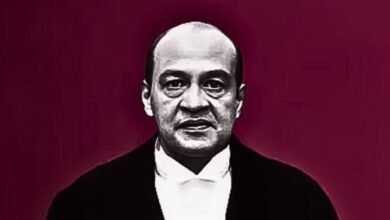Pushing digital payments: Cash, but no cash
Last week, a Reserve Bank of India (RBI) committee headed by former Aadhaar boss Nandan Nilekani released an ambitious report on propelling a 10-fold rise in India’s digital payments volume in the next three years, with the help of a network of point-of-sale (PoS) terminals in kirana stores, banks’ business correspondents (BCs), and automated teller machines (ATMs) to attract rural customers to adopt digital money.
This so-called ‘Cash in Cash out’ (CICO) system, the committee expects, will help in moving the needle on digital payments toward high-volume but low-value transactions from the current lowvolume, high-value tilt and eventually lead to a decline in cash usage, especially in the rural areas.
The committee has listed removing transaction charges on digital payments made to government, moving to a marketdetermined merchant discount rate (MDR) pricing structure and easing KYC costs to banks as its key recommendations.
While the committee has aligned its objectives to the government’s broader goal of weeding out the use of cash, unlike the folly of previous such reports, it does not seek a direct replacement of cash with digital modes of transaction but easier digital access.
India’s digital payments have expanded 10 times since the BJP-led government assumed charge in 2014. The rise of digital payments was driven mostly by the advent of e-wallet players, such as Paytm along with the advent of NPCIdeveloped Unified Payments Interface (UPI) technology in the immediate aftermath of demonetisation in 2016. However, cash in circulation (CIC) as a percentage of GDP fell only to 11.5% in 2018 from 12% in the predemonetisation era.
Bankers acknowledge that cash is an important part of the rural economy and any effort toward digitisation must take into account the usage of cash.
“The report pushes for sustainable, organic growth and not a one-off event which will propel this change,” said Rishi Gupta, CEO, Fino Payments Bank. “The recommendation has acknowledged the importance of roping in micro players in rural areas for the growth of the ecosystem.”
Gupta’s payments bank has recently changed its business model from a branch-led to a business correspondent-led and a push toward rural digitisation could prove pivotal for him.
Anand Kumar Bajaj, chairman of the communications committee of the Business Correspondents Federation of India, said the report acknowledges that business correspondents have to be allowed partnering with multiple banks. The report also has tried making the BC model more viable by recommending incentives such as GST reduction on DBT transfers and clarity in bank transfer rates, he said.
The Nilekani committee’s report wants the payment ecosystem to change from issuance to acceptance. The recommendations include asking regulators to completely digitise high-volume, low-value transactions sources such as bills, tickets, top-ups, etc.
ACCEPTANCE OVER DEPLOYMENT
The PoS infrastructure has increased sharply over the last couple of years. At the same time, high costs in maintaining ATMs have forced banks to go slow on this network.
Although PoS infrastructure is better, it is still way behind other developing markets. In India, 30,83,000 PoS terminals were in service at the end of 2017, which equates to around one device per 427 people, as per data from recently published payments system benchmark report by the RBI. The US, China and even Brazil have a PoS point for less than every 100 citizens.
Similarly, ATM deployment has grown at an annual rate of 14% between 2012 and 2017, which is only second to China. But the number of people per ATM at 5,700 is dismal as per international standards.
THE CICO MODEL
The committee’s solution to bridge this gap is to rope in the wide network of country’s kiraana store merchants, banks’ business correspondents and ATMs to act as direct access point for customers in rural areas, where digital penetration has been lacking owing to a lack of access infrastructure. The proposed (CICO) system will incentivise these players to provide instant cash to customers in return of digital money.
“While this may seem counterintuitive, the committee felt that this was an important safety net that needed to be built,” the report said.
However, some say depending on the PoS alone cannot be a solution as ATMs are also an important part of digitisation.
“This report is focusing on cash in and cash out through PoS terminals but has missed a key element — the ATM channel that in rural areas may be the only source for cash out. The success of DBT programmes depend on effective cash out channels, which the ATM is best suited for,” said Navroze Dastur, MD, South Asia for payments major NCR.
Dastur, who is also on the board of CATMi, the industry representative body of ATM operators, said that the committee should have considered using the multiple facets of ATMs like paying bills and doing banking transactions in its report.
“The ATM channel over years has gained the trust of the consumer and is a 24 x7 channel, which no kirana merchant can replace. In rural areas, where literacy rates are low, dependence on human mechanisms like kirana stores can be misused and customers cheated. Such withdrawal needs trust and there is no other better mode than an ATM or a branch,” said Dastur.
INCENTIVISING MERCHANTS
Trust or no trust, the committee has given impetus to deploying PoS devices across the country. The report mulls over a possible reduction of cost borne by a merchant on these digital transactions called the merchant discount rates. The committee has recommended RBI cut interchange rate, which is a component of MDR, by 0.15% and let the rest of the rate be set through competitive market pricing to improve the margins for both merchants and acquirer banks.
“There is very less space for acquirers to make money around transactions. The committee recommends regulators to fix interchange rate so that acquirers have more skin in the game in acceptance as it is one of the biggest hurdles in ecosystem growth today,” said Harshil Mathur, CEO, Razorpay.
However, this may prove costly for issuing banks or those whose accounts gets debited or credited from the transaction. Some have voiced concerns on how incentivising solely the middlemen may not be enough and would benefit only a select few.
“Pricing alone will not lead to more transactions. I think the key to increase transactions is with the government. They should incentivise all customer payments through the digital channel and disincentivise cash-based transactions,” said a senior executive of an international company. He spoke on the condition of anonymity.
“A few years ago, the RBI asked banks to cap ATM charges at ₹15 for customers and subsequently brought it down further. The pricing of ATMs has made it non-viable and hence banks are reluctant to put new ATMs. As a result, the total number of ATMs has been stuck at 2 lakh. I hope they don’t do the same thing to PoS terminals,” the person cited above said.




